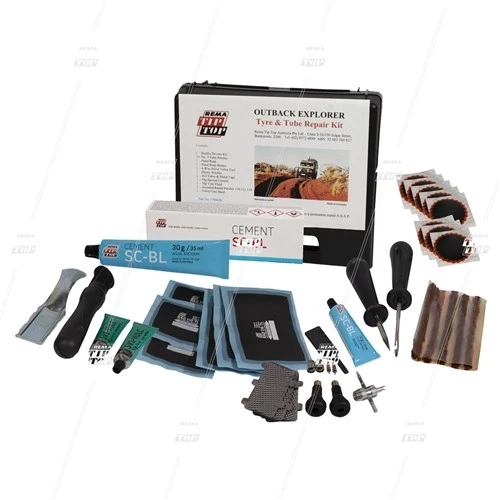A flat tyre can spoil your day, really fast. The ability to fix a flat tyre will save money, time, and, of course, stress. However, the options set people off. Patches work quite differently from plugs. There are so many things in a kit you might not have even heard of. What will be discussed here is how each repair method works, what should be in a good puncture repair kit, and when you should fix a flat yourself or let a pro set it right for you.
Puncture Repair Types
Tyre Patches
Patches are applied inside your tyre. They bond on the rubber through a process of rubberisation that makes a permanent seal. It is best suited for punctures occurring on the tread area. When correctly applied, a tyre repair patch will last as long as the tyre itself. But they can't be used on sidewalls or at the edge of the tyre. Those are moving areas, and a patch cannot safely hold onto them.
Tyre Plugs
Plugs offer the fastest fix possible when the roadside sticks you. You push the rubber string inside the puncture hole from the outside. It seals the hole almost instantaneously and obviously without removing the tyre from the wheel. They are perfect for small holes in the tread: put them in, and within minutes, you are driving. Yet, they are less permanent than when only patches are used.
Patch-Plus-Plug Combo
Much larger punctures get treated by patching shops with the simultaneous use of both treatments. The plug immediately fills the hole. Long-term strength is then provided by the patch that bonds to the interior. This solution juxtaposes the fast versus durable approach. It is the gold standard when a puncture really needs professional attention.
What Is in a Puncture Repair Kit
A tyre repair kit offers supplies for every kind of repair situation. Patches come in various sizes to cope with different puncture widths.
Plugs or strings are your means to carry out fast roadside repairs.
Vulcanising cement bonds the patch to the tyre.
Reamer and insertion tools clean the puncture and assist in the placement of plugs.
A buffing tool roughens the inner surface, allowing patches to adhere more effectively.
Valve core tool and spare cores repair leaking valves.
Gloves and instructions keep your hands clean and show you how to carry out the repairs.
Look for kits with patches and plugs to maximise your flexibility.
DIY vs Pro: How to Decide
Moving correctly will keep you on the road.
It is okay to include a single puncture in the centre tread area, with a small diameter under approximately 6 millimetres, and no visible sidewall or bead damage.
Call a pro or replace when you see sidewall damage, punctures near the shoulder or bead, multiple holes, visible cords inside the tyre, large or jagged tears, or slow leaks you can't locate.
High-speed tyres, commercial vehicles, and some warranties will require professional repair or full replacement; hence, check your tyre specifications before carrying out any fixes yourself.
The Bottom Line
When applied within, patches offer permanent repairs. Plugs are utilised for quicker repairs. The most effective kits offer both options and the tools to use them properly. From studio-grade repair kits to production-grade patches to plug and specialist tools, Rema Tip Top has it all. Their Australian store offers a wide range of products, from basic tube repair kits to more advanced solutions. You may go through their range online or consult your local Rema Tip Top branch if you need trade support to select the correct kit for your application.


